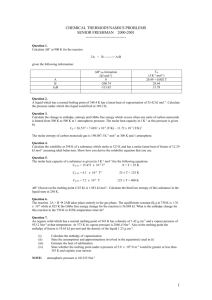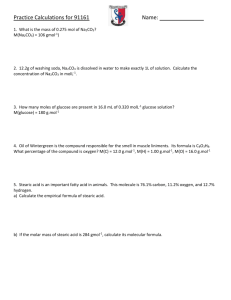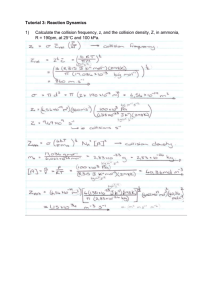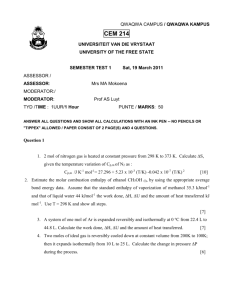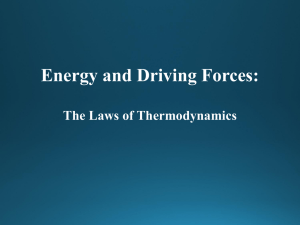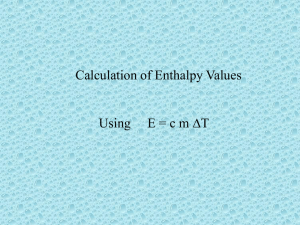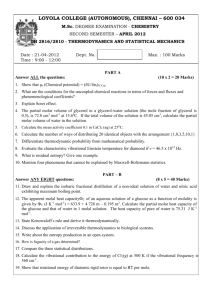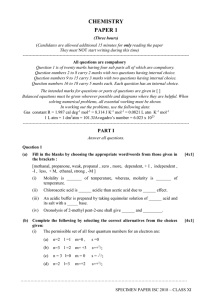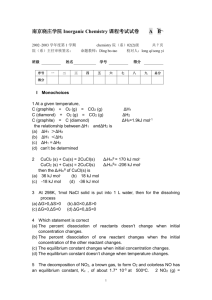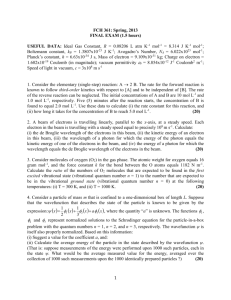Kinetics
advertisement
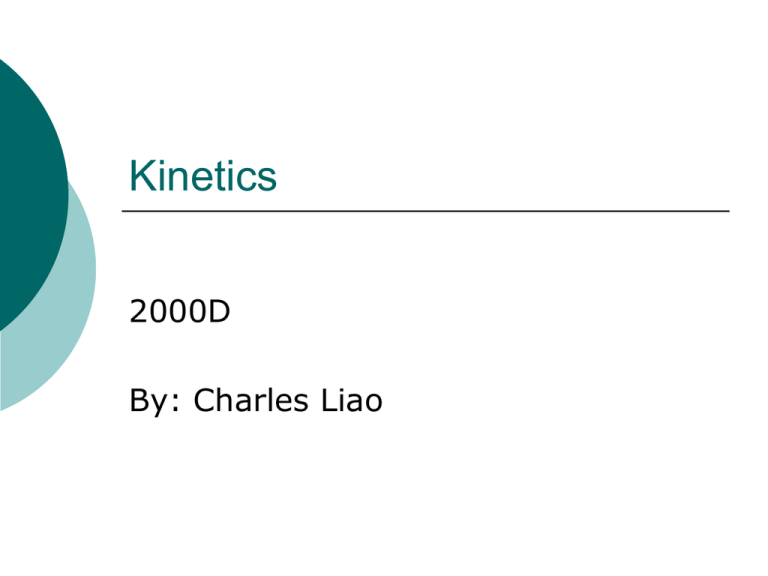
Kinetics 2000D By: Charles Liao 2000D a. Referring to the data in the table below, calculate the standard enthalpy change, for the reaction at 25˚C. Standard enthalpy of formation, DH at 25°C (kJ mol-1) O3(g) NO(g) NO2(g) 143 kJ mol-1 90 kJ mol-1 33 kJ mol-1 O3(g) + NO(g) O2(g) + NO2(g) ∆H =33 (kJ mol-1) -(143+90) (kJ mol-1) =-200 (kJ mol-1) 2000D b. Make a qualitative prediction about the magnitude of the standard entropy change, ∆S˚, for the reaction at 25˚C. Justify your answer. A very small change is present because both sides of the equation contain 2 moles of gas. Because Entropy is the measure of disorder and molecules in their gas state contain the least amount of order, very little change is observed from 2 moles to 2 moles. 2000D c. On the basis of your answers to parts (a) and (b), predict the sign of the standard free-energy change, for the reaction at 25˚C. Explain your reasoning. Because the reaction’s ∆S˚ is very little and the equation to determine free energy change is ∆G˚= ∆H˚-T ∆S˚, it can be assumed that with a negative ∆H˚ and at 25˚C or 298˚K, that the reaction is spontaneous. By having a spontaneous reaction, ∆G is inherently Negative 2000D d. Use the information in the table below to write the rate-law expression for the reaction, and explain how you obtained your answer. k= [O3][NO] Based on Experiments 1 and 2, by doubling the [NO] concentration, the rate doubles. Therefore the reaction is first order with respect for [NO]. The doubling of the [O3] concentration also doubles the rate therefore making the reaction a first order with respect to [O3] as well. Experiment Number Initial [O3] (mol L-1) Initial [NO] (mol L-1) Initial Rate of Formation of [NO2] (mol L-1 s-1) 1 0.001 0.001 x 2 0.001 0.002 2x 3 0.002 0.001 2x 4 0.002 0.002 4x 2000D e. The following three-step mechanism is proposed for the reaction. Identify the step that must be the slowest in order for this mechanism to be consistent with the rate-law expression derived in part (d). Step I: O3 + NO O + NO3 Step II: O+ O3 2 O2 Step III: NO3 + NO 2 NO2 In Part D, it was found that the Rate-law expression was k= [O3][NO]. Therefore the slow step of the reaction must be Step 1. The Slow step is the rate-determining step in equations.
